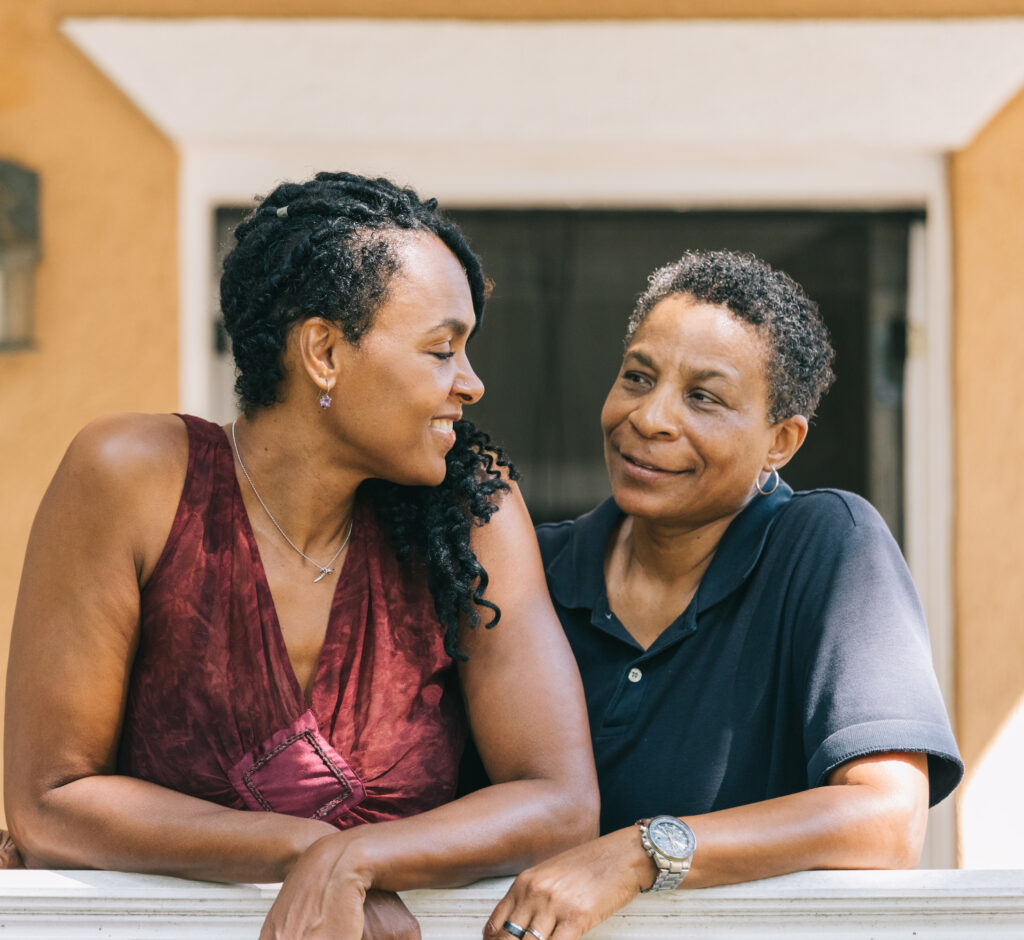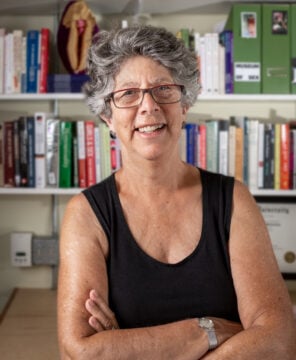I remember when I was first coming to terms with my sexual orientation and coming out. It was the scary 1970s when I could have lost my job based on my choice of who I loved. That was almost 50 years ago and I never could have imagined back then what my life today would look like – being married to the woman of my dreams, having two wonderful adult children, living openly as my own authentic self, and advocating for the rights of LGBTQIA+ elders as a sexuality educator.
While talking about sexual health for older adults, we want to be as inclusive as possible of all genders, sexual orientations, and relationship types. In celebrating the wide and varied experiences that all residents bring to assisted living communities, it’s important to learn more about the experiences of our LGBTQ+ residents. If you’ve ever been in a conversation and were not sure what the alphabet soup and acronyms mean, it might be difficult to have those conversations so let’s take a moment to unravel the terms. Two of the most important terms to start with are sex and gender. They’re similar but not always the same.
Sex

Let’s start with sex. Sex is not only what feels good when we are physically intimate with another person as we age (and I’ve also written about what sex means to older adults). Sex is also the label we get assigned based on our visible reproductive organs when we are born. Most of us fit pretty neatly into male or female, but about 2% of the US population is born with either indeterminate genitalia or have mixed genitalia. These babies do not fit into a binary of looking either male or female at birth. (By the way, the number of intersex births is about the same as the number of babies born with red hair.) And some people grow up feeling that the label assigned at birth really doesn’t fit them later on (but we’ll get to that in a moment).
Gender
Up until about 20 years ago, most of us thought sex and gender were basically the same thing. You’re born male, so you’re a man. You’re born female, so you’re a woman. As I noted, some people just don’t feel that the doctor or their parents got it right. Some people consider their gender as something different than the sex they were assigned at birth. If someone is AFAB (assigned female at birth) or AMAB (assigned male at birth) yet their insights into themselves lead them to feel more comfortable with a different identity, we now understand that their sex assigned at birth and their identity now may be different. Gender identity is the social construct which people define for themselves. And it’s how you, in your own mind, think about your own identity. Gender expression is how you present yourself in the ways you dress, act, and interact.

Transgender and Cisgender
If someone is AMAB and feels comfortable presenting themselves as a man, we call them cisgender (from the Latin root meaning “on this side of”). If someone is AFAB and feels more comfortable identifying as a man or as no gender at all, we call them transgender (from the Latin root meaning “across or beyond”). The terms “cis” and “trans” are what we usually hear as shorthand for cisgender and transgender. There are also some trans people who prefer no gender and often call themselves nonbinary or gender queer. Sometimes you’ll see people’s pronouns after their name, to help us know how they identify. It’s important to try your best not to misgender someone, so a good rule of thumb is to not assume until you ask.
Sexual Orientation
Sexual orientation refers to who you are physically, spiritually, and sexually attracted to based on their gender and your own. It could be women, it could be men, it could be no specific gender, it could be many genders, it could be no one at all. It all depends on what you feel inside.
A good way to think about the difference between gender identity and sexual orientation is this: Gender identity is how you feel about yourself (whether you feel more like a man, a woman, neither, or both). Sexual orientation is how you feel about others (whether you’re attracted to men, women, neither, or both).
Kinsey Scale Revisited
Remember the Kinsey Scale developed by the late Dr. Alfred Kinsey in the 1940s? He has been known as the father of sex research and one of his major contributions was a scale from zero to six on which people identified from exclusively heterosexual (0) to exclusively homosexual (6) or somewhere in the middle. In the original reports, there was an “X” category for those who felt no sexual reactions at all.
In 1948, this was quite a shock to the nation, especially since anyone who was homosexual could be put in jail, lose their children, get fired, or harassed. Stigma and discrimination were rampant and many homosexuals were afraid to come out of the closet. I wrote a book about these courageous elders whose activism made possible much of the research and change we have become accustomed to today.
Kinsey and his colleague’s research was groundbreaking in terms of their results since they criss-crossed the United States and found that 37% of males and 13% of females had at least some overt homosexual experience to orgasm. These percentages have changed over time yet the most enduring part of their research is that homosexuality existed in our population even when people were closeted.
Today, we see that sexual orientation exists as part of a broader spectrum. But don’t get concerned if you don’t know what all the letters in LGBTQIA+ stand for. These letters encompass many aspects of gender identity and sexual orientation.
LGBTQIA+ Defined
- L is for lesbian, meaning anyone who identifies as a woman who is sexually or romantically attracted to other women.
- G is for gay (which used to be an umbrella term when I was growing up, as in “gay rights” and “gay bars”). Gay and lesbian were the expanded umbrella terms in the 1990s.
- B is for bisexual, which means someone is not solely attracted to men or women, but could be attracted to both. Bisexuals have often been invisible and it wasn’t until the late 1990s that bisexuals were seen as part of the community.
- T is for transgender and is a gender identity, though it was not seen as part of the early “gay rights” umbrella. Transgender activists have spoken up about their involvement in early “gay rights” movements and have always been an integral part of the community, even though they often felt silenced.
- Q is a term that signifies that someone identifies as queer. Many young people have reclaimed the term queer to signify their place in the LGBTQ+ pantheon. Some older adults may bristle at the term, having been called queer as a pejorative term in their youth. And some older adults feel comfortable with the word queer.
- Sometimes, the Q can signify “questioning,” which describes someone who is questioning their sexual orientation or gender identity.
- I is for intersex and is not a sexual orientation. Intersex people are born with chromosomes or sex organs that do not fit typical binary images of male or female bodies. In the past, intersex babies were often given an assigned sex at birth with surgery later. Intersex people, like many others on the LGBTQIA+ spectrum face stigma and discrimination.
- A is for asexual, sometimes shortened to “ace”. This is a wide and formerly misunderstood area of sexual orientation and covers those who are asexual (not sexually attracted to anyone), aromantic (those who are not romantically attracted).

I put a + sign at the end of LGBTQIA+ because we are constantly uncovering an even wider variety of sexual orientations, including demisexuals (those people who are only attracted to someone with whom they have an emotional bond), a sapiosexual (those people who are attracted to someone else’s intellect), pansexual (those people who are attracted to people regardless of their sex or gender identity) and so many others. There’s one form of sexual orientation that might catch you by surprise. Did you know there are graysexuals? At first glance you might think it’s those who are attracted to someone with gray hair or older. But in fact, graysexuals are those people who may not fit the strictest definition of asexual and may still occasionally have feelings of attraction for someone else.
No one can force anyone to be attracted to any particular type of person or identify as any type of gender. This is sometimes called conversion therapy and such attempts have come under tremendous scrutiny or outlawed in a number of states.
One of the most critical aspects of sexual health to teach older adults of all gender identities and sexual orientations is the importance of open and honest communication with your sexual partners. This might include your sexual history, boundaries, sexual desires, and consent. For transgender and gender non-conforming older adults, it’s important to provide education on the risks and benefits of hormone therapy and gender-affirming surgeries, as well as how these procedures can impact sexual health and function. Additionally, for older adults who engage in non-monogamous relationships or participate in the kink community, it’s important to provide education on risk reduction strategies, such as the use of barriers, regular STI testing, and communication with all sexual partners. Staying current with the changing language of gender and sexual orientation is important for caregivers working with older adults, especially those LGBTQIA+ older adults who have felt the trauma and indignities of a closeted life in the past. Our job is to honor and understand our LGBTQIA+ elders so that they may live full and dignified lives alongside their peers in each of our communities. If you’d like more information, I’ve attached more resources below.
References and Resources
Fleishman, J. (2020). The Stonewall Generation: LGBTQ Elders on Sex, Activism, and Aging. Boston, MA: Skinner House Press.
GLAAD a non-profit organization focused on LGBTQ advocacy and cultural change. GLAAD works to ensure fair, accurate, and inclusive representation and creates national and local programs that advance LGBTQ acceptance.
Green, E. & Maurer, L. (2015). The Teaching Transgender Toolkit: A Facilitator’s Guide to Increasing Knowledge, Decreasing Prejudice, and Building Skills. Out For Health Publishing.
Kinsey Institute fosters and promote a greater understanding of human sexuality and relationships through research, outreach, education, and historical preservation.SAGE stands proudly with the LGBTQ+ pioneers across the country who’ve been fighting for decades for their right to live with dignity and respect.


 Dr. Jane Fleishman
Dr. Jane Fleishman